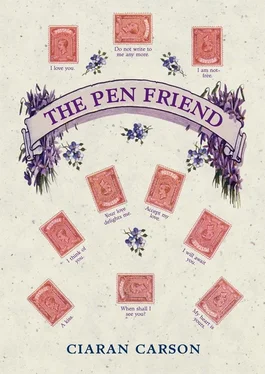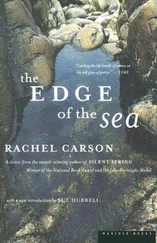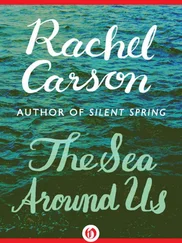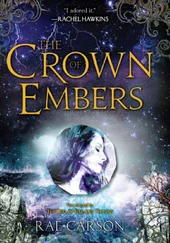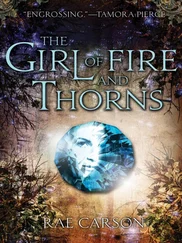My psychic work was done when my brain was working perfectly. I derived great happiness from it, and it could not be responsible for what has occurred. Possibly some anatomical change has suddenly taken place in the brain substance which would have occurred in any case. We are such complicated bits of mechanism that it does not require much to put us out of action. I wish to reaffirm my belief that the grave does not finish all. I trust that I will find myself with a renewed energy, and able still to further the work in which we are both interested. With regard to my present condition, I feel there is absolutely no hope. The breakdown is making further way and I am getting worse daily. I feel that in a short time I might become a danger to those I love. You may think it strange that all this could take place inside a couple of weeks, but so it is. But what I wish to affirm now with all my strength is that the whole thing is due to natural causes and that the psychic work is in no way responsible.
Crawford had been found lying dead on the rocks of the foreshore of Belfast Lough, a blue poison bottle beside him, and I remember the little silver-mounted blue glass salt cruets you had placed on the table like sacramental receptacles that evening in New York.
I cannot remember what scent you wore that night, so firm is my recall of those imaginary musk-roses, violets and hawthorns. But I can see your jade pendant with the amber fleck in it that matched your eye, and the faint sheen of your pale green linen suit, and I was proud of you as you flitted in your Gemini mode from group to group, directing the waiters with discreet attention, chatting to the musicians when they took a break. And though, as a Libra, I am one who always seeks another for balance, I knew from experience when to leave you alone, and when to wait for you to come to me, for a Libra, according to the books, is also harmonious, diplomatic, and peacemaking — ambassadorial qualities, though I doubt if I ever could have made an ambassador. I was, however, tempted to write this letter with an Ambassador pen, made in the USA in the late 1930s or early 40s, to judge from its looks. Not that any ambassador would be seen dead with such a pen: like the Wearever De Luxe, this Ambassador’s name belies its low cost. It might be a Dollar Pen, maybe a dollar fifty. It’s modelled on the much more expensive Conklin pens of the same era, with a streamlined cap reminiscent of the nose of an airplane or a locomotive; but the clip is a little flimsy, brushed with a gold wash rather than gold-plated, and the nib, too, is gold-washed steel, rather than solid gold.
Nevertheless, like the Wearever, it has a lovely bright jazzy feel to it, the body patterned in black ‘railroad tracks’ laid on to an iridescent red ground. But I chose instead a Conway Stewart 58, top of their range in the late 1950s, as being more appropriate to your ‘muted Irish’ theme: the pattern is called Green Hatch in the catalogues, and it’s a patchwork of subtle Connemara marble greens overlaid with wavy black cross-hatched lines. It’s chunkier and heavier than most Conways, and the three gold bands on the cap give it a magisterial air: I can see this pen clipped into the breast pocket of a 1950s Irish senator or ambassador, and I wonder what pen, if any, the Irish Ambassador sported that night of the reception in New York. If I could go back in time, with what I now know, I would know, but I would not have known then. I was not a collector then, and, beyond your Dinkie, I was oblivious to pens, and what they might signify about their owners.
I am pleased to write with the Conway Stewart 58 Green Hatch because when it first came to me, it would not write properly. The ink flow was reluctant, the writing had a dry, parsimonious feel to it. So I read up on it and discovered what had to be done. First I unscrewed the section — the bit that holds the nib — from the barrel with a pair of rubber-covered section pliers. I took the ink-sac, that’s the closed rubber tube that holds the ink, off the end of the section, they call it the section nipple, where it fits into the barrel. Then I got what they call a knock-out jig, that’s a metal cylinder closed at one end, with holes of various diameters drilled in it to accommodate the various section sizes, and I matched the section up with the correct hole, and with a tack hammer and a brass rod I knocked out the nib and the feed, that’s the black plastic bit at the back of the nib, that has a capillary groove to carry ink from the sac to the nib. So now the pen is broken down into its component parts: barrel, sac, section, feed, nib. I hold the gold nib between my finger and my thumb — how delicate and light it is, divorced from its body, like a child’s fingernail! — and I wash it under a tap, for there’s ink encrusted on it where it fitted into the section, until it glitters. I look at it through a loupe and I see that it is as the book said, the slit between the tines of the nib is too tight, it needs opened up, so I take a scalpel and ease it between the tines, gently, for I don’t want to break off the iridium on the tip, and I work the scalpel backwards and forwards a little to widen the slit sufficiently to ease the flow of ink.
I put the nib to one side for a while. There’s a residue of hard shellac on the section nipple, where the sac was attached, so I scrape that off with the scalpel, and smooth it off with a nail-file, and wipe it with a damp cloth till it looks clean and shiny, then I dry it, and paint a little fresh shellac on to it, it comes in a bottle like nail-varnish, with a tiny integral brush that is also its cap. That done, I screw the brush back into the bottle. I’ve already prepared a new ink-sac which I’ve cut to the proper length, making sure it doesn’t press against the end of the barrel when I try it for size. I take the section in my left hand as I ease the end of the sac on to the nipple with my right thumb and forefinger — a tricky operation this, I have to use the left thumb as well, but I manage it. I straighten it up, give it a quarter turn to spread the sealant, and I put it aside for ten minutes or so to dry.
Then I push the section with sac attached back into the barrel, and twist it with the pliers to a tight fit. Now it’s time for the nib. I fit the feed to its back and put the ensemble into a nib-fitting vice, and tighten the vice on it, and push the open section end on to it, making sure the nib is not set too deep nor too high into the section, and it’s done. I open a bottle of Conway Stewart ink — the name, like Onoto, is back in business again, making expensive status symbol pens — and I fill the pen. I take a clean sheet of paper and begin to write, Gabriel Conway , and lo and behold! it works perfectly, not too wet and not too dry, nice and smooth, Gabriel Conway , I write, 41 Ophir Gardens, Belfast … and I feel pleased with myself at having resolved this problem, as I am pleased to write now of our time together in New York twenty-two years ago, when I did not know what I know now.
I did not know then, for example, that Conway Stewart was founded in 1905 — the same year as Onoto — by Frank Garner and Tommy Jarvis, who, reluctant for whatever reason to give the firm their own names, purportedly called it after a music-hall double act, Conway and Stewart, who regularly performed in London at the time. You remember that George Sweetser, the inventor of the Onoto plunger system, appeared on the stage as a roller-skating female impersonator, and you will wonder, with me, at this curious fellowship of music-hall performers and pen manufacturers.
Nor did I know, in 1983, that many fountain pens, and Conway Stewart pens in particular, were made not only from Celluloid, but from a plastic called casein, a by-product of the dairy industry. Casein is made from milk curd. A basic casein can be made in the home with milk and vinegar. Bring a cup of milk to a simmer and slowly dribble in twelve tablespoons of vinegar, stirring all the time as if you were making mayonnaise. When lumps begin to form and coagulate, drain off the excess liquid. When these curds have cooled, form them into whatever shape or shapes you please — milk buttons, perhaps — and leave overnight, by which time they will have set rock solid. Casein can be made into sheets, rods and tubes. It has been used for imitation jade, tortoiseshell, and lapis lazuli, and in the manufacture of various articles besides pens, such as buttons, buckles, knitting needles, combs, hair-slides, pocket mirrors, door handles, knife handles, walking-stick handles, cigarette cases, radio cabinets, and electrical plugs, sockets and jacks. And that, until some hours ago, was the extent of my knowledge of casein, so I decided to research it on the Internet. This is what I found.
Читать дальше
